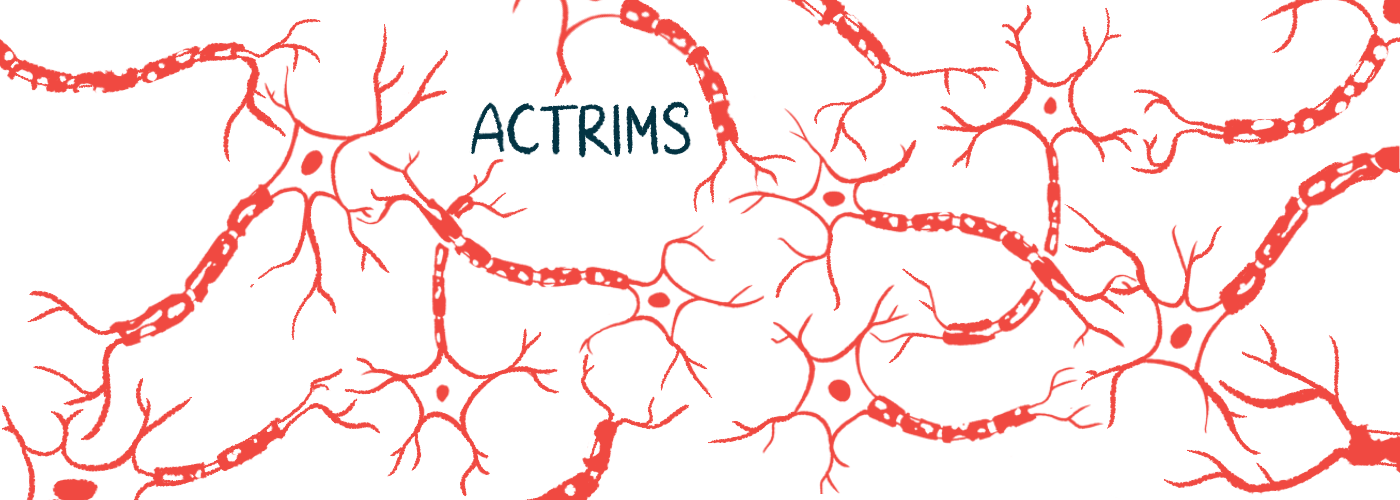ACTRIMS 2024: Vidofludimus calcium lowers NfL levels in progressive MS
Reduction in nerve damage marker noted for PPMS patients and all SPMS types

Treatment with Immunic Therapeutics‘ experimental oral therapy vidofludimus calcium (IMU-838) lowered the levels of a nerve damage marker in people with all subtypes of progressive multiple sclerosis (MS), including those without recent inflammatory activity.
That’s according to an interim analysis of data from a Phase 2 study, which continues to suggest that vidofludimus calcium’s effects in people with MS are not related solely to its ability to lower inflammatory responses.
“We believe that the data set provides biomarker evidence that vidofludimus calcium’s activity extends beyond the previously observed anti-inflammatory effects, further reinforcing its neuroprotective potential,” Daniel Vitt, PhD, Immunic’s president and CEO, said in a company press release.
Vidofludimus calcium may activate a protein that helps to protect nerve cells
The poster with the findings, “Impact of Vidofludimus Calcium on Serum Neurofilament in Progressive MS: Data From the CALLIPER Interim Analysis,” was presented at the Americas Committee for Treatment and Research in Multiple Sclerosis (ACTRIMS) Forum 2024, held last week in Florida and virtually. The work was funded by Immunic.
Vidofludimus calcium works to reduce inflammation by blocking the activity of an immune cell enzyme called dihydroorotate dehydrogenase (DHODH). Recently, however, it’s been shown that the experimental therapy may also activate Nurr1, a brain protein with nerve-protecting properties.
Immunic is developing vidofludimus as a potential treatment for all MS types. The Phase 2 CALLIPER clinical trial (NCT05054140) is testing it against a placebo specifically in people with progressive forms of the disease.
Most patients have relapsing disease, which is marked by flares where MS symptoms worsen suddenly, followed by periods of remission where symptoms are stable or ease. By contrast, progressive MS is marked by symptoms that gradually worsen over time irrespective of relapse activity.
Progressive MS can be divided into two subtypes, primary progressive MS (PPMS) or secondary progressive MS (SPMS), based on whether it was apparent from disease onset or the result of progression after relapsing disease. SPMS can be further classified as either active or nonactive based on whether the patient is continuing to experience some relapse or MRI activity.
A total of 467 people enrolled in CALLIPER and were randomly assigned to receive either vidofludimus or a placebo for up to 120 weeks (about two years). This interim analysis covered data from the 203 patients who completed six months of treatment. Of them, 59 had PPMS, 124 nonactive SPMS, and 20 active SPMS.
Researchers evaluated the effect of treatment on blood levels of neurofilament light chain (NfL), a well established marker of nerve damage.
NfL levels fell by 43.3% in active SPMS patients at six months of treatment
Results showed that average NfL levels decreased somewhat in patients given vidofludimus, whereas NfL levels increased over time for patients on a placebo. After six months, average NfL levels were 22.4% lower with the experimental treatment than a placebo.
This effect was most pronounced among patients with active SPMS, where vidofludimus treatment resulted in 43.3% lower NfL levels than a placebo. But the reduction in NfL relative to placebo also was seen for PPMS (by 18.8%) and for nonactive SPMS (by 20.1%).
“We saw a clear separation of vidofludimus calcium from placebo in serum neurofilament light chain (NfL) levels across all progressive multiple sclerosis (PMS) patients as well as all subtypes,” Vitt said, noting that full, top-line trial results are expected in April 2025.
Ongoing inflammation is thought to play a major role in driving active SPMS, but less so in nonactive SPMS or PPMS — which normally lack more evident signs of inflammation such as active lesions or relapses.
Andreas Muehler, MD, chief medical officer of Immunic, particularly noted the benefits observed in nonactive SPMS patients, “the MS population with the highest unmet medical need,” and said “there is currently no relevant treatment available in the US,” in an email to Multiple Sclerosis News Today.
“Vidofludimus calcium could be a game changer, because in non-active secondary progressive MS disease, it is known that NfL can predict future disability risk,” he added. “We believe that these interim biomarker results demonstrate that vidofludimus calcium has neuroprotective effects, in addition to it anti-inflammatory and antiviral effects.”
Due to its multifactorial effects, Muehler believes vidofludimus “is ideally suited to address the complex [disease processes] of progressive MS and we very much look forward to the topline data from the CALLIPER trial.”
Data overall are consistent with reductions in NfL also seen among people with relapsing forms of MS, who were treated with vidofludimus in an earlier Phase 2 trial called EMPhASIS (NCT03846219). Immunic now is running two Phase 3 studies, ENSURE-1 (NCT05134441) and ENSURE-2 (NCT05201638), to test vidofludimus in relapsing MS patients.
Lesser fatigue reported in COVID-19 patients treated in separate trial
Immunic also is exploring vidofludimus as a potential treatment in other indications. In a separate poster at ACTRIMS, the company shared data from a placebo-controlled study of vidofludimus in people with COVID-19. Of particular note, findings indicated that fewer patients given vidofludimus than a placebo reported substantial fatigue (50% vs. 80%).
“Fatigue represents a very common symptom in both multiple sclerosis (MS) and post COVID syndrome (PCS). In both diseases, fatigue drives the ability of patients to participate in daily social activities and strongly influences their quality of life,” Muehler said. “Although the specific triggers for fatigue in both diseases have not yet been finally determined, there is increasing epidemiological evidence that have a potential common trigger: Epstein-Barr virus (EBV) reactivation.”
Infection with the EBV virus has been identified as a leading MS risk factor.
Data from lab experiments have shown that vidofludimus may help prevent reactivation of EBV, which according to Immunic, overall suggest it also may help to ease MS-related fatigue.
“While fatigue is one of the most dominating symptoms for MS patients influencing their quality of life and ability to participate in social activities, it remains largely unsolved from the clinical perspective,” Vitt said.
“Because of vidofludimus calcium’s potential ability to prevent the reactivation of the Epstein-Barr virus (EBV), it may also contribute to the reduction of fatigue in MS patients [creating] yet another differentiating feature for this medication candidate,” Vitt added, noting that this possibility could be confirmed in the ongoing ENSURE trials.
Note: The Multiple Sclerosis News Today team is providing coverage of the ACTRIMS Forum 2024 Feb. 29-March 2. Go here to see the latest stories from the conference.







